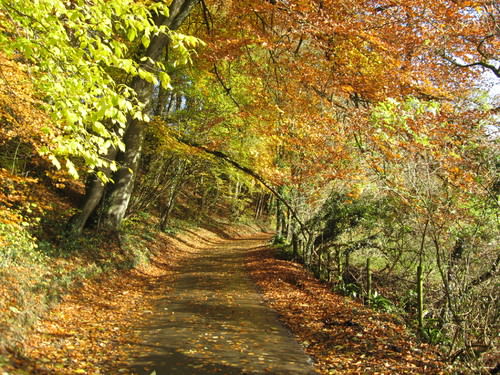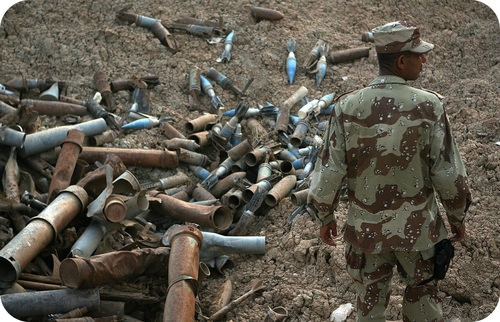化学范围
章节大纲
-
How does soap relate to chemistry?
::肥皂与化学有何关联?Chemistry affects every area of our lives. Here is just one example of chemistry in action – the making of soaps. Soap was once made by animal fat in ashes – the product was hard on the skin and not very pleasant to use. Today, soap manufacture involves complicated chemical processes to provide a wide variety of soaps for different skin types. Colors and odors can be custom-made for that individual experience.
::化学影响着我们生活的每个领域。 这里只是化学活动的一个实例 — — 肥皂的制作。 肥皂曾经由灰烬中的动物脂肪制成,产品在皮肤上很硬,使用起来并不愉快。 如今,肥皂的制造需要复杂的化学过程,为不同种类的皮肤提供各种肥皂。 色彩和臭味可以根据个人经验定制。What is this made of? How can we produce this material quicker and at lower cost? Will this product harm us or help us? All of these questions can be answered using the science of chemistry.
::这是用什么制造的?我们怎样能更快地以较低的成本生产这种材料?这种产品会伤害我们还是帮助我们?所有这些问题都可以用化学科学来解答。What Is Chemistry?
::什么是化学?Science is a general term used to describe the principled, rigorous study of the natural world. Many interconnected disciplines fall under this broader concept. For example, physics is the study of motion and forces. Biology is the study of living things. Geology is the study of the Earth and the rocks and minerals of which it is comprised. Chemistry is the study of the composition of matter and the changes that matter undergoes. Matter is anything that has mass and takes up space. Virtually everything around us is matter, including both living and nonliving things. Chemistry affects nearly everything we see and every action we take. Chemistry explains why milk that is left in the refrigerator for too long turns sour. Chemistry explains why certain pollutants called chlorofluorocarbons have done lasting damage to the ozone layer of our planet. Chemistry explains why the leaves of deciduous trees turn from green in the summer to various shades of red and yellow in the autumn ( Figure ).
::科学是用来描述对自然界进行有原则的严格研究的一般术语。 许多相互关联的学科都属于这个更广泛的概念。 例如,物理学是运动和力量的研究。 生物学是生物学的研究。 地质学是地球及其构成的岩石和矿物的研究。 化学是物质构成和变化的研究。 物质是具有质量和占用空间的任何物质。 化学几乎影响到我们周围的一切, 包括生物和非生物物质。 化学几乎影响到我们所看到的一切和我们采取的每一项行动。 化学解释了为什么在冰箱里留下的牛奶过长的酸酸酸。 化学解释了为什么某些被称为氟氯化碳的污染物对我们星球的臭氧层造成了持久的损害。 化学解释了为什么衰落的树叶从夏季的绿色变成秋天的红黄树叶( Figure )。Chemical reactions in the leaves of deciduous trees cause them to change color from green to red, orange, or yellow before dropping to the ground. Chemistry touches every area of our lives. The medicines we take, the food we eat, the clothes we wear – all these materials and more are, in some way or another, products of chemistry.
::化学影响着我们生活的每一个领域。 我们的药物、我们吃的食物、我们穿的衣服 — — 所有这些材料和更多的材料在某种程度上都是化学产品。Chemists look at the world in two ways, often simultaneously. The two worlds of the chemist are the macroscopic world and the microscopic world. Macroscopic refers to substances and objects that can be seen, touched, and measured directly. Microscopic refers to the small particles that make up all matter. Chemists must observe matter and do experiments macroscopically and then make generalizations and propose explanations that are microscopic in nature. For example, anyone can observe the in appearance that occurs as an iron object such as a tractor that is left out in the gradually turns to rust. However, a chemist looks at the rusting tractor and thinks about what is going on with the individual atoms that make up the iron and how they are changing as a result of exposure to oxygen in the air and water from rain. Throughout your study of chemistry, you will often switch back and forth between the macroscopic and microscopic worlds.
::化学家通常同时以两种方式看待世界。 化学家的两个世界是宏观世界和微观世界。 宏观科学是指可以直接看到、 触摸和测量的物质和物体。 微观科学是指构成所有物质的小粒子。 化学家必须观察物质并进行宏观学实验, 然后进行宏观学实验, 然后做具有微观学性质的概括, 并提出解释。 例如, 任何人都可以观察像拖拉机这样的铁体外形, 逐渐变成锈蚀。 但是, 化学家可以观察生锈的拖拉机, 思考构成铁的个体原子正在发生什么变化, 以及它们是如何因接触空气中的氧气和雨水产生的变化。 在你对化学的研究中, 你经常会在宏观学世界和微观学世界之间变换。Rusting artillery shells. Summary
::摘要-
Chemistry is the study of matter and the changes it undergoes.
::化学是对物质的研究 以及它所经历的变化 -
Chemistry considers both macroscopic and microscopic information.
::化学既考虑宏观和微观信息,也考虑宏观和微观信息。
Review
::回顾-
Give
two examples of chemistry in your everyday life.
::举两个化学的例子 在你的日常生活中。 -
What is the macroscopic world?
::什么是宏观世界? -
What is the microscopic world?
::什么是显微镜世界?
Explore More
::探索更多-
Read the label on a prepared food product (for example: bread, cereal, dessert). List all the ingredients in the product. Look up each ingredient on the Internet and write down what that material is doing in the food product.
::阅读制作食品的标签(例如:面包、谷物、甜点),列出产品中的所有成分。在互联网上查找每种成分,并记录食品中的成分。 -
Select your favorite hobby or activity. List all the items you use in that activity or hobby. For each item, find out how chemistry has contributed to the creation or better operation of that item.
::选择您最喜爱的爱好或活动。列出您在该活动或爱好中使用的所有项目。对于每个项目,请了解化学如何促进该项目的创建或更好地运作。
-
Chemistry is the study of matter and the changes it undergoes.


